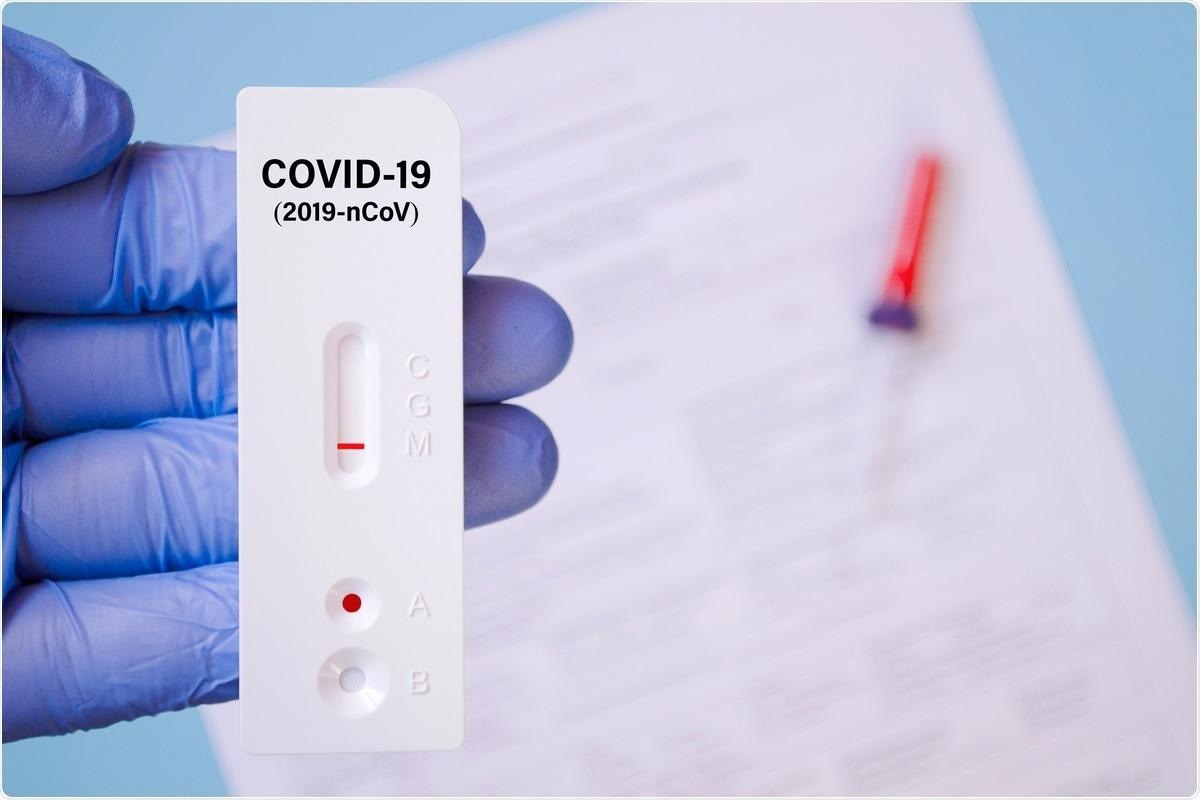In a recent study posted to the Lancet preprint* server, researchers assessed the utility of severe acute respiratory syndrome coronavirus-2 (SARS-CoV-2) rapid antigen testing (RAT) for patient triage in the hospital emergency department (ED).
The coronavirus disease (COVID-19) is conventionally diagnosed using a reverse transcription-polymerase chain reaction (RT-PCR) test, which provides accurate results at the expense of time. Throughout the COVID-19 pandemic, newer diagnostic tools like the point-of-care antigen (Ag) lateral flow devices (LFDs) have been developed to offer instant results, but these rapid tests are less sensitive than RT-PCR tests. However, it is essential to rapidly diagnose COVID-19 to better inform the clinical action for patients especially those presenting to the ED.

Study: Utility of SARS-CoV-2 Rapid Antigen Testing for Patient Triage in the Emergency Department: A Clinical Implementation Study in Melbourne, Australia. Image Credit: Andrei Dubadzel / Shutterstock.com
The study
In the present study, researchers determined the sensitivity and specificity of a rapid Ag test (Abbott PanBio COVID-19 Ag test) to guide the clinical action of patients in the ED in Melbourne, Australia. All patients requiring emergency care had to take an RT-PCR test to ascertain the status of their COVID-19 infection to be directed to an appropriate department/destination, i.e., non-COVID-19 or COVID-19 ward, in the hospital. The study was conducted between September 13, 2021, and October 26, 2021, and patients were tested by both RT-PCR and RAT.
Initially, all patients presenting to the ED underwent a standard epidemiological and clinical screening to stratify them into five COVID-19 risk groups- 1) known COVID-19, 2) high risk, 3) at risk, 4) low-risk, and 5) no-risk. Known COVID-19 patients were treated in dedicated COVID wards, patients of high- and at-risk groups with a negative RT-PCR report were admitted to suspected COVID-19 wards. The low-risk cases were managed in the ED until their PCR results were returned and later reclassified to known COVID-19 or no-risk group, while the no-risk cases were in the regular in-patient wards without any additional infection control measures.
The Ag test was deemed invalid when the “control line” was absent, the development of the test line in 15-20 minutes was inferred as a positive result, and if it did not appear, the test was negative. The authors calculated clinical sensitivity, specificity, positive (PPV), and negative predictive values (NPV) by comparing RAT results to RT-PCR test results.
Findings
The clinical decisions for patient triage, patient flow, and infection control measures were made based on RAT results. About 8,802 patients required emergency services for a total of 10,618 occasions during the study period. Both Ag and RT-PCR tests were performed on 1,773 occasions, and 11 test results were excluded due to invalid or indeterminate results. RT-PCR tests were conducted on 4,636 occasions, and 2,863 RT-PCR results from 2,579 patients were evaluated in the study.
Of the patients who received both the tests, 15.5% of the samples were RT-PCR positive. Shorter ED stay was observed for RAT-positive cases with a median length of stay or LOS of 274 minutes in the ED compared to RAT-negative cases with LOS in the ED of 421 minutes. This difference was found to be statistically significant.
The clinical sensitivity of the Ag test was found to be 75.5% when compared with RT-PCR results, and it decreased in the lower-risk groups. The lowest sensitivity for RAT was about 67.3% for the patients in the known COVID-19 group. RAT sensitivity was found to be inversely related to cycle threshold (Ct) values. The sensitivity for samples with Ct value < 15 was 100%, and 22.2% for samples with Ct value >30. False-positive results were not observed with RAT, and the specificity and PPV were 100% for patients of all risk groups. The team observed 67 negative RAT results out of 273 RT-PCR-positive samples indicating 24.5% false-negative results with RAT.
Conclusions
The authors of this study assessed the performance of a specific Ag test and observed that the overall sensitivity of the PanBio Ag test was lower than the acceptable minimum of 80%. Based on the findings, it must be noted that RAT cannot be used as a definitive ‘rule out test’ but rather as a ‘rule-in test.’
The observation of the high PPV of the PanBio Ag test suggests that COVID-19 rapid antigen tests can be utilized for rapid triage when a high number of patients present to the ED and it can be helpful to shorten their stay in the ED and preserve RT-PCR testing for more important clinical and public health requirements.
*Important notice
Preprints with the Lancet publishes preliminary scientific reports that are not peer-reviewed and, therefore, should not be regarded as conclusive, guide clinical practice/health-related behavior, or treated as established information
- Bond, Katherine and Smith, Ben and Gardiner, Emma and Liew, Kwee Chin and Williams, Eloise and Walsham, Nicola and Putland, Mark and Williamson, Deborah, Utility of SARS-CoV-2 Rapid Antigen Testing for Patient Triage in the Emergency Department: A Clinical Implementation Study in Melbourne, Australia, Available at SSRN: https:/ssrn.com/abstract=4024202, https://papers.ssrn.com/sol3/papers.cfm?abstract_id=4024202
Posted in: Medical Research News | Disease/Infection News | Healthcare News
Tags: Antigen, Coronavirus, Coronavirus Disease COVID-19, covid-19, CT, Diagnostic, Hospital, Infection Control, Pandemic, Polymerase, Polymerase Chain Reaction, Public Health, Respiratory, SARS, SARS-CoV-2, Severe Acute Respiratory, Severe Acute Respiratory Syndrome, Syndrome, Transcription, Triage

Written by
Tarun Sai Lomte
Tarun is a writer based in Hyderabad, India. He has a Master’s degree in Biotechnology from the University of Hyderabad and is enthusiastic about scientific research. He enjoys reading research papers and literature reviews and is passionate about writing.
Source: Read Full Article
